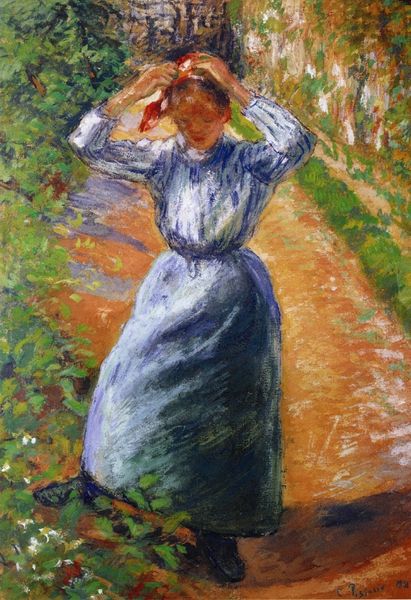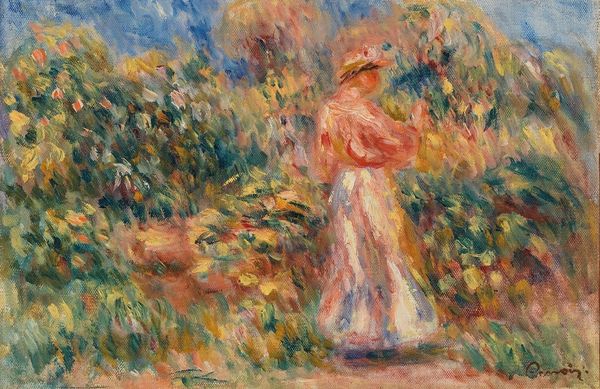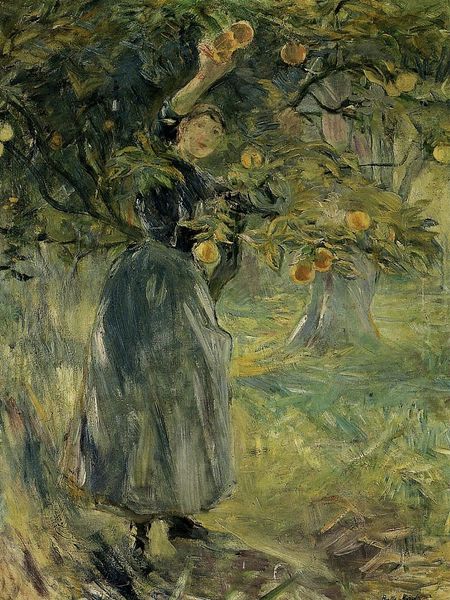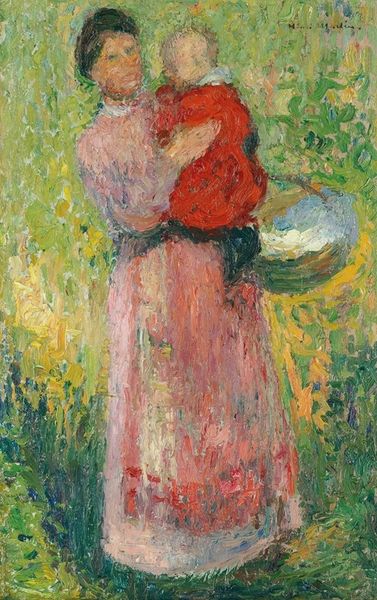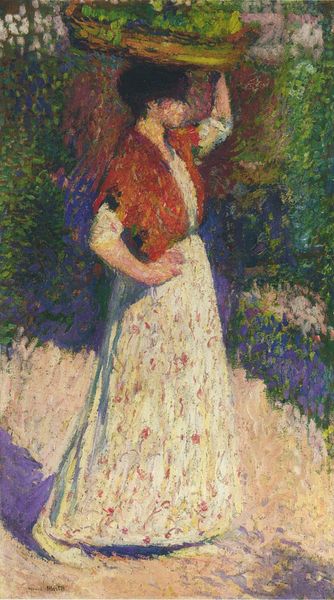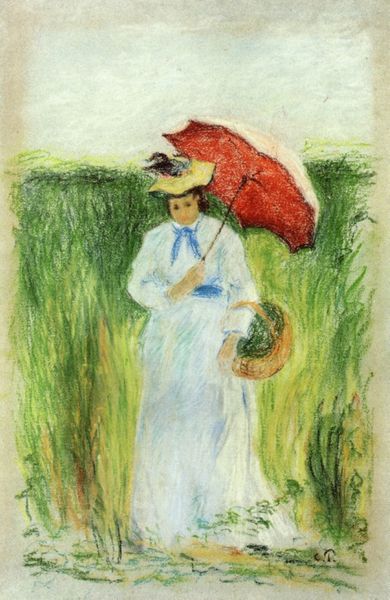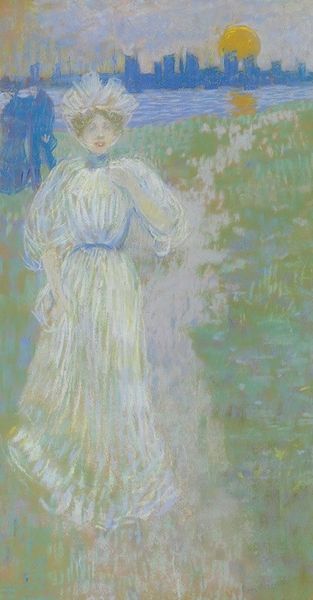
Woman with a Parasol (also known as Study of a Figure Outdoors (Facing Left)) 1886
0:00
0:00
Copyright: Public domain
Curator: Let’s turn our attention to Claude Monet’s "Woman with a Parasol," painted in 1886, a beautiful example of his plein-air work. Editor: It feels so airy and unrestrained, almost aggressively bright! The figure, rendered in these rapid strokes of light, seems to be swept up in the movement of the landscape itself. There’s a tension, isn't there, between the seemingly posed figure and the surrounding storm of nature? Curator: Indeed. Structurally, consider how the diagonal of her form and parasol cuts across the canvas, creating a dynamic opposition to the more static horizontal lines of the field. And then the composition, essentially divided into zones of lower detail toward the ground, then rising into an upper expanse of tumultuous clouds. Semiotically, what might the parasol itself represent in this arrangement? Editor: The parasol feels almost defensive against the raw, unfiltered power embodied by the open field and turbulent sky. One can see her presence here, poised elegantly amidst that force, as an emblem of late 19th century bourgeoise femininity – privileged but somewhat precariously positioned in relationship to uncontrolled environments. Was this really a celebration of freedom, or did it rather serve to further define those allowed such freedom? Who was this woman, anyway? Curator: The figure is Suzanne Hoschedé, Monet's future daughter-in-law, posing outdoors. The rapid brushstrokes and use of color give this work, created entirely en plein air, a sense of spontaneity. You see that, structurally, he used broken color techniques, setting contrasting colors next to each other to give depth and light, to evoke that airy and light-filled sensibility. Editor: Absolutely. The effect of light on the dress alone tells an entire story! Yet how can we look at this woman and not ask about the women who don't occupy the center of a picture so effortlessly? To be afforded this setting as an occasion to embody artistic freedom— it makes me wonder what this idyllic imagery excludes and elides. The visual pleasure of impressionism for whom? Curator: I understand, but perhaps we can also simply see how Monet masterfully captured a fleeting moment, an ephemeral intersection between figure and surrounding conditions, using an experimental structure. Editor: Perhaps. It remains such an elegantly executed construction of very particular privilege.
Comments
No comments
Be the first to comment and join the conversation on the ultimate creative platform.

